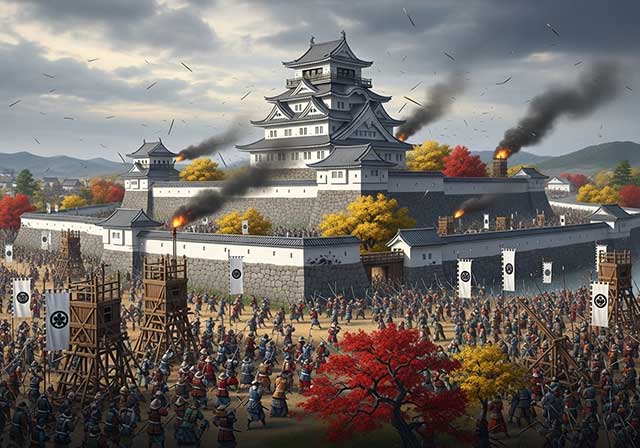
The siege of Shiroishi Castle was part of the Sekigahara campaign and took place several months before the decisive battle of Sekigahara. The daimyo of Aizu Province, Uesugi Kagekatsu, posed a serious threat to Tokugawa Ieyasu's plans to defeat the Western Coalition, and Ieyasu decided to curb his actions with the help of his northern vassals. To this end, he ordered Date Masamune to invade the province of Aizu and capture Shiroishi Castle.
Shiroishi Castle was the main stronghold of the Katta district, which had previously belonged to Date Masamune himself. However, in 1591, Toyotomi Hideyoshi confiscated these lands along with Masamune's other possessions. In 1598, Uesugi Kagekatsu gained control of the castle and transferred it to his vassal Amakasa Kagetugu.
By the time Date's troops invaded, Amakasa was at Wakamatsu Castle, and his nephew Tosaka Katsunori was in charge of Shiroishi. Masamune's soldiers knew the area around the castle and its layout really well, which gave them a big advantage in getting ready for the siege.
Date's army set up camp on a hill near Shiroishi, having previously blocked the roads to Yonezawa and Fukushima to prevent possible reinforcements from Uesugi. On July 24, Masamune began the assault, using the hijime tactic of “attacking with fire.” The approaches to the castle and the buildings of the third courtyard, the Sannomaru, were completely burned down. Following the fire, Date's assault troops went on the offensive.
The defenders of the castle fought stubbornly and bravely, but gradually lost ground. By the morning of July 25, Masamune's troops already controlled most of the fortress, with the exception of the main courtyard, the hommaru. Realizing the hopelessness of the situation, Tosaka Katsunori proposed to begin negotiations for surrender. However, one of his commanders, Kanokoda Uemon, a former vassal of the Hatakeyama clan, which had been destroyed by the Date clan, categorically refused to surrender and insisted on fighting to the end.
As a result, a conflict arose between them, and Katsunori killed Uemon, after which he surrendered to Masamune's troops. Thus, Shiroishi Castle fell in just one day.
After the victory, Masamune handed over control of the castle to his uncle Ishikawa Akimitsu and returned to his castle in Kitame. Shortly thereafter, Naoe Kanetsugu, one of Uesugi's most trusted and experienced vassals, sent troops to recapture Shiroishi. However, on the way, his soldiers were ambushed by bandits and peasants who had rebelled against the Uesugi. Suffering losses and losing their combat capability, Kanetsugu's army was forced to retreat.
See also
-
The Siege of Hara Castle

The Shimabara Rebellion of 1637–1638, which culminated in the siege of Hara Castle, was the last major uprising of the Edo period and had serious political consequences.
-
Battle of Tennoji
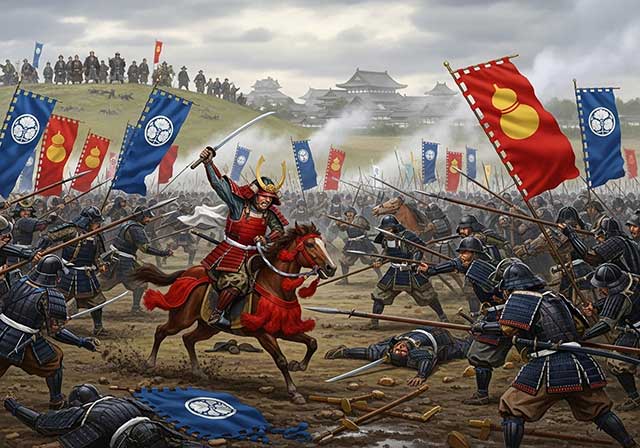
The confrontation between Tokugawa Ieyasu and Toyotomi Hideyori during the “Osaka Winter Campaign” ended with the signing of a peace treaty. On January 22, 1615, the day after the treaty was signed, Ieyasu pretended to disband his army. In reality, this meant that the Shimazu forces withdrew to the nearest port. On the same day, almost the entire Tokugawa army began filling in the outer moat.
-
Siege of Shuri Castle
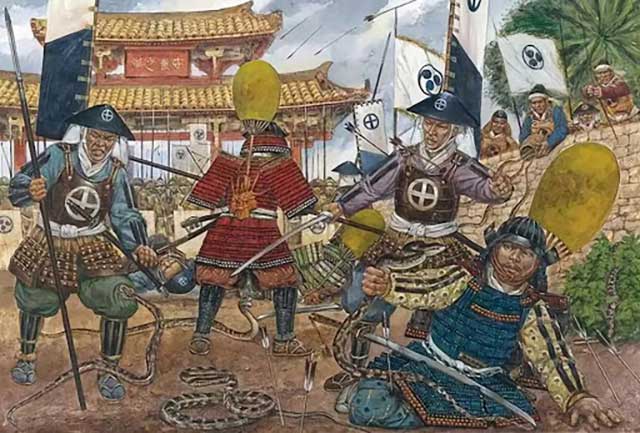
The Ryukyu Kingdom was established in 1429 on Okinawa, the largest island of the Ryukyu (Nansei) archipelago, as a result of the military unification of three rival kingdoms. In the following years, the state's control spread to all the islands of the archipelago.
-
The Siege of Fushimi Castle
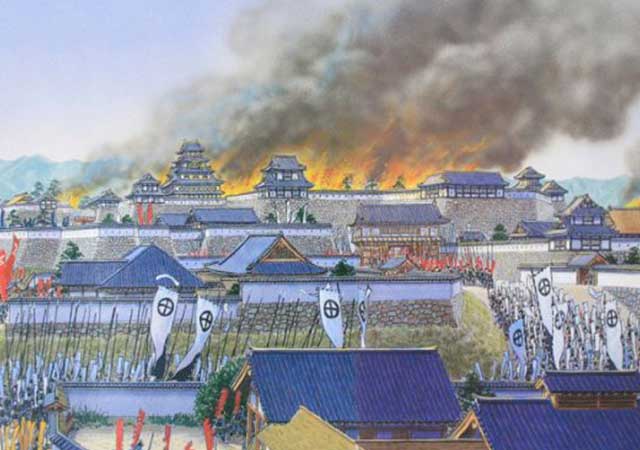
Fushimi can perhaps be considered one of the most “unfortunate” castles of the Sengoku Jidai period. The original castle was built by Toyotomi Hideyoshi in the southeast of Kyoto in 1594 as his residence in the imperial city.
-
The Siege of Otsu Castle
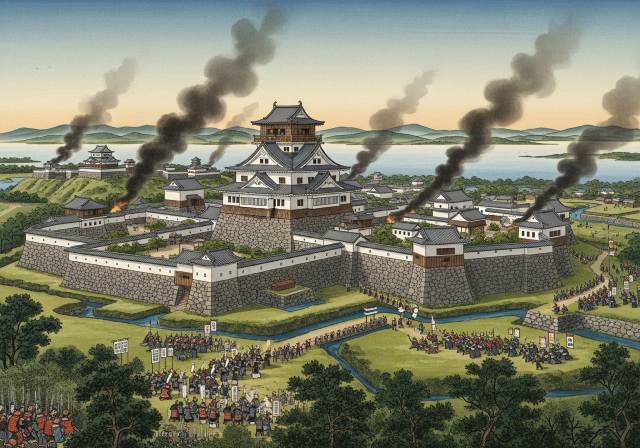
The siege of Otsu Castle was part of the Sekigahara campaign, during which the so-called Eastern Coalition, led by Tokugawa Ieyasu, fought against the Western Coalition, led by Ishida Mitsunari. Otsu Castle was built in 1586 by order of Toyotomi Hideyoshi near the capital Kyoto, on the site of the dismantled Sakamoto Castle. It belonged to the type of “water castles” — mizujō — as one side of it faced Japan's largest lake, Lake Biwa, and it was surrounded by a system of moats filled with lake water, which made the fortress resemble an island.
-
The Second Siege of Jinju Castle
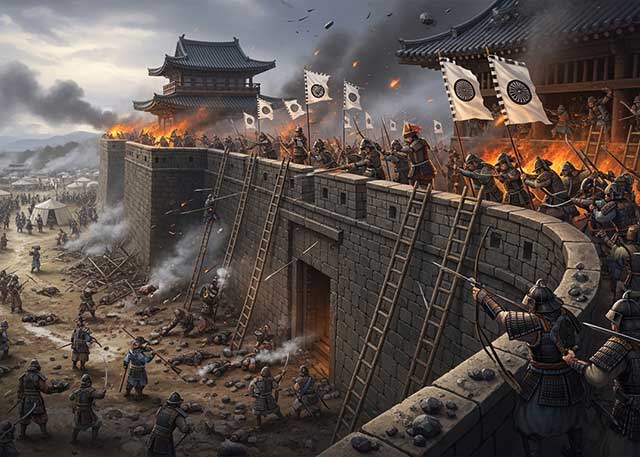
During the two Korean campaigns of the 16th century, the Japanese repeatedly had to capture enemy fortresses and defend occupied or constructed fortifications from the combined Korean and Chinese forces. Among all the operations of that time, the second siege of Jinju Castle is considered the most interesting from the point of view of siege warfare.
-
The Siege of Takamatsu Castle
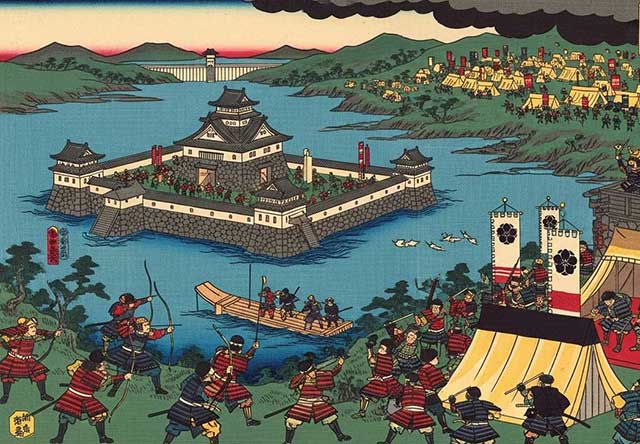
The siege of Takamatsu Castle in Bitchu Province is considered the first mizuzeme, or “water siege,” in Japanese history. Until then, such an original tactic had never been used.
-
The Third Siege of Takatenjin Castle

The history of the castle prior to the conflict between the Tokugawa and Takeda clans is rather unclear. According to one version, the castle was built in 1416, when Imagawa Sadayoshi (1325–1420) was governor of Suruga Province and half of Totomi Province. Allegedly, it was he who ordered Imagawa Norimasa (1364–1433) to build this fortification. However, no reliable evidence has been found to support this. Another version is considered more plausible, according to which the castle was built during the conquest of Totomi Province at the end of the 15th century by Imagawa Ujitsuna (1473–1526) and his general Ise Shinkuro (Hojo Soon). In this case, another of Ujitsuna's generals, Kusima Masashige (1492–1521), is considered responsible for the construction.

